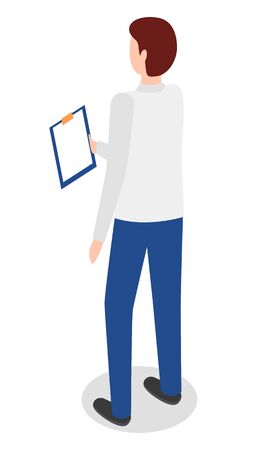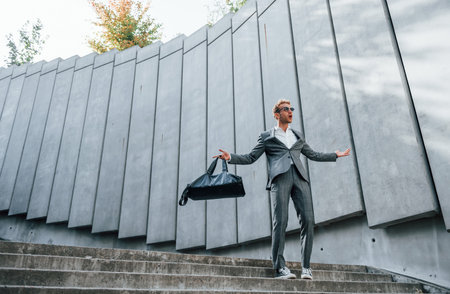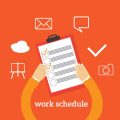1. Overly Casual Attire
When preparing for a U.S. job interview, it’s important to remember that first impressions matter. Even if the company says they have a “casual” dress code, showing up in jeans, t-shirts, sneakers, or athleisure wear can send the wrong message to potential employers. These items can make you seem unprepared or not serious about the opportunity.
Why Casual Outfits Don’t Work
Many workplaces in the U.S. are shifting toward more relaxed dress codes, but interviews are still seen as special occasions where you need to put your best foot forward. Wearing overly casual clothes may suggest that you don’t respect the company or the interview process enough to dress appropriately. It’s better to be slightly overdressed than too casual.
Common Casual Clothing Mistakes
| Mistake | Why Its Inappropriate |
|---|---|
| Jeans | Too informal and often associated with leisure time |
| T-Shirts (especially with graphics or slogans) | Lack of professionalism; may appear careless |
| Sneakers | Associated with sports or casual outings rather than work |
| Athleisure (leggings, hoodies, sweatpants) | Gives an impression of being too relaxed or uninterested |
Better Alternatives for Interview Attire
If you’re unsure what to wear, opt for business casual as a safe choice unless the company specifically tells you otherwise. Here are some ideas:
| For Men | For Women |
|---|---|
| Collared shirt (button-up or polo) and dress pants Dress shoes or clean loafers Optional: blazer or sweater |
Blouse or conservative top and slacks or knee-length skirt Closed-toe flats or modest heels Optional: cardigan or blazer |
Tip:
If you’re ever in doubt about what to wear, it’s okay to ask your recruiter or HR contact for advice. Dressing neatly and professionally shows that you value the opportunity and respect the workplace culture.
2. Loud or Distracting Outfits
When you’re preparing for a U.S. job interview, your goal is to make a professional impression and let your skills shine. Wearing loud or distracting outfits can easily work against you. Outfits that are too bold can pull the interviewer’s attention away from what really matters: your qualifications and what you have to say.
What Counts as Loud or Distracting?
Loud or distracting outfits include bright, neon colors, clothing with oversized logos, flashy jewelry, and busy patterns. These choices can be memorable—but not in a good way. Instead of focusing on your experience, the interviewer might just remember your bright orange jacket or huge earrings.
Common Distractions to Avoid
| Outfit Element | Why It’s Distracting |
|---|---|
| Bright Colors (e.g., neon green, hot pink) | They stand out too much and overshadow your professionalism. |
| Oversized Logos/Brand Names | Makes you look less serious and more casual than appropriate for interviews. |
| Flashy Jewelry (large necklaces, big hoops) | Draws attention away from your face and what youre saying. |
| Busy Patterns (loud prints, excessive designs) | Makes it hard for interviewers to focus on you rather than your clothes. |
Keep It Simple and Professional
The best approach is to keep your outfit simple and classic. Neutral colors like navy, gray, black, and white are always safe choices. If you want to add some personality, try a small accessory—like a subtle watch or a tasteful scarf. Remember, your outfit should support your confidence, not steal the spotlight.

3. Clothes That Don’t Fit Properly
Wearing clothes that don’t fit right is a common mistake many candidates make at U.S. job interviews. Whether your outfit is too tight, too baggy, or simply looks messy, it can send the wrong message to your potential employer. Let’s break down why fit matters and how you can make sure your attire works in your favor.
Why Proper Fit Is Important
First impressions matter, and what you wear says a lot about you before you even say a word. Clothing that fits well shows that you pay attention to details and care about presenting yourself professionally. On the other hand, ill-fitting clothes may suggest that you are careless or not serious about the job opportunity.
Common Fit Mistakes
| Mistake | How It Looks | Why Its a Problem |
|---|---|---|
| Too Tight | Uncomfortable, restrictive, unprofessional | Distracts from your skills and can seem inappropriate for the workplace |
| Too Baggy | Sloppy, careless, unfinished | Makes you appear less confident and less polished |
| Unkempt (wrinkled, stained) | Messy, rushed, inattentive | Suggests a lack of effort or respect for the interview process |
Tips for a Polished Look
- Choose the Right Size: Make sure your clothes fit your body—not too tight, not too loose.
- Check for Wrinkles: Iron your outfit before the interview to look sharp and put-together.
- Avoid Stains or Tears: Double-check your clothing for any spots or damage.
- Tailor If Needed: If you can, have your interview attire tailored for a perfect fit—it makes a big difference!
Dressing in well-fitted, neat clothing helps you create a positive impression during your U.S. job interview. When your outfit fits properly and looks clean, it shows you take both yourself and the opportunity seriously.
4. Inappropriate Footwear
When it comes to job interviews in the U.S., your choice of shoes can make a bigger impression than you might think. Wearing flip-flops, sandals, or overly worn-out shoes sends the wrong message about your professionalism and attention to detail. Even if the workplace is casual, showing up in sloppy or inappropriate footwear can hurt your chances of landing the job.
Why Footwear Matters
Shoes are often one of the first things people notice. Clean, polished, and appropriate shoes show that you care about making a good impression and respect the company’s culture.
Shoes to Avoid
| Type of Shoe | Why to Avoid |
|---|---|
| Flip-flops | Too casual and unprofessional for any job interview setting |
| Sandals (open-toe) | Considered too relaxed; not suitable for most office environments |
| Worn-out sneakers | Look careless and give a poor impression of personal grooming |
| Dirty or scuffed dress shoes | Shows lack of attention to detail and preparation |
| High heels that are too tall or flashy | Can be distracting and may come off as inappropriate depending on the industry |
Recommended Footwear Choices
- Closed-toe flats or low-heeled shoes: Great for women, comfortable yet professional.
- Polished dress shoes: Oxfords, loafers, or other classic styles for men are always safe choices.
- Clean, simple boots: Suitable in colder climates or for business-casual workplaces.
- Neutral colors: Black, brown, navy, or gray work well for almost any interview setting.
Quick Tip:
If you’re unsure about what shoes to wear, stick with closed-toe options that are clean and in good condition. When in doubt, it’s better to be slightly overdressed than underdressed—your future employer will appreciate your effort!
5. Ignoring Company Culture and Expectations
One of the biggest mistakes you can make when dressing for a U.S. job interview is ignoring the company’s culture and expectations. What works for one business might not work for another, even if they’re in the same industry. Showing that you understand and respect the company’s vibe through your outfit can make a strong first impression.
Why Company Culture Matters
Every workplace in the U.S. has its own unique style. Some companies are very formal, while others are more laid-back or creative. Wearing an outfit that fits the company culture shows that you did your homework and that you’re ready to be part of their team.
How to Research Dress Codes
Before your interview, check out the company’s website or social media pages to see what current employees wear. If you’re unsure, it’s always okay to ask your recruiter or HR contact about the dress code. You want to look like you belong—even before you’ve landed the job!
Typical U.S. Company Dress Codes
| Industry | Common Dress Code | Recommended Interview Outfit |
|---|---|---|
| Corporate (Finance, Law) | Business Formal | Suits, dress shirts/blouses, closed-toe shoes |
| Tech Startups | Business Casual or Casual | Neat slacks/khakis, button-down shirt/blouse, clean sneakers or loafers |
| Creative Fields (Design, Media) | Smart Casual | Tidy jeans or slacks, stylish top, clean shoes—add a bit of personality! |
| Retail & Service Industry | Varies by brand (usually neat casual) | Polo or plain shirt, khakis or slacks, comfortable shoes |
| Nonprofits/Education | Business Casual | Knee-length dress/skirt, slacks with blouse/shirt, flats or low heels |
Avoid These Common Mistakes:
- Dressing too formally for a casual office: Overdressing can make you seem out of touch with the team.
- Dressing too casually for a corporate setting: Underdressing may be seen as disrespectful or unprofessional.
- Wearing flashy logos or inappropriate graphics: Keep it simple and professional unless you know the company loves bold fashion choices.
- Ignoring cultural norms: For example, some workplaces expect covered tattoos and limited piercings during interviews.
The Bottom Line: Fit In—But Don’t Lose Yourself!
Your goal is to show you understand the company’s expectations while still letting your personality shine through. Taking time to research and choose the right outfit will help you feel confident and ready to impress at your U.S. job interview.


